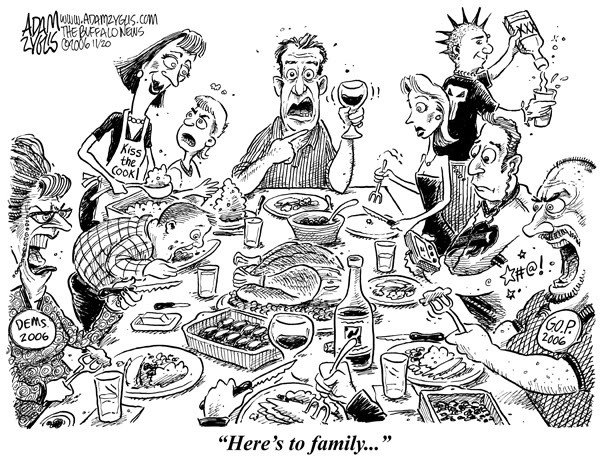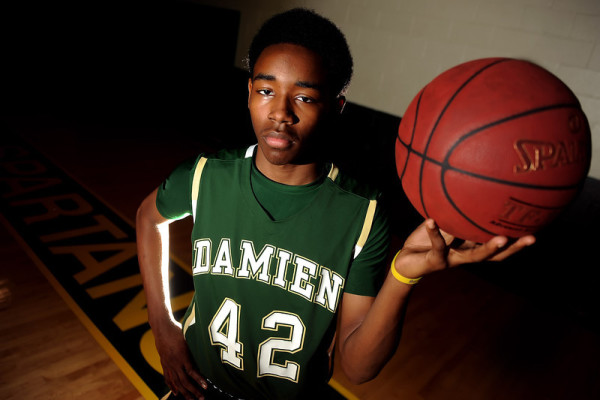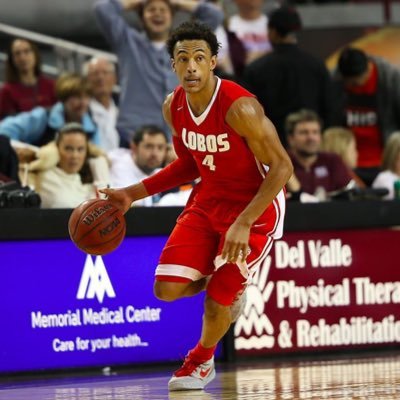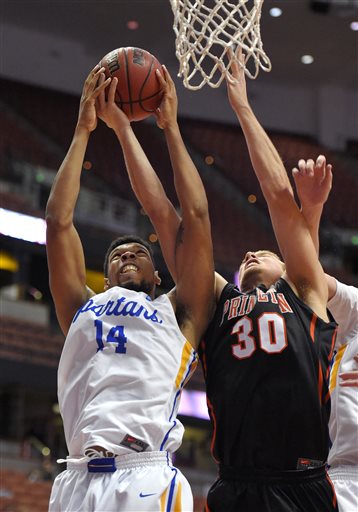Checking in on… the Mountain West
Posted by Andrew Murawa on December 1st, 2015For mid-major conferences (and make no bones about it, that’s exactly what the Mountain West is whether you like that term or not), the non-conference schedule is when rivals get together, lock arms and march in unison against all comers. San Diego State fans may hate UNLV (and vice versa) from January to March, but at this time of the year, Aztecs are rooting for Rebels (and Lobos and Broncos and Rams and the like) to maximize the overall strength of the conference. It’s sort of like Thanksgiving dinner in a dysfunctional family. Early on, everybody’s working together to make a great dinner. The turkey’s in the oven; the pumpkin pie is cooling on the windowsill; Aunt Bertha’s working on the mashed potatoes; Uncle Fred’s passing out liquid cheer by the pint-full; the kids are playing quietly on the floor. Good times. That’s the non-conference slate. Everybody is still on speaking terms. Hours later, people have eaten too much; perhaps a little too much of that cheer got consumed. The kids are screaming at high pitch. An argument has started over, well, nobody really remembers what. Past grievances begin to be aired. That’s the conference schedule. Everybody hates each other again and even if they can’t remember exactly why, surely somewhere there’s a good reason.
But so far, in the early stages of this Mountain West season, that kitchen seems filled with a few too many cooks who don’t exactly have their eyes on the dish. There’s some smoke coming out of the oven. The gravy’s boiled over. One of those bratty kids knocked the pie off the window sill and the dog got up on the counter and into the mashed potatoes. It’s all going to hell and dinner hasn’t even been served yet. To turn this metaphor back into basketball, here we are three weeks into the season and these are the five best non-conference wins among the 11 Mountain West conference teams (with current KenPom rankings of the opponents in parentheses).
- UNLV by three over Indiana (#25)
- Colorado State by six at Northern Iowa (#45)
- San Diego State by 14 over California (#52)
- UNLV by two over Cal Poly (#99)
- Boise State by seven over UC Irvine (#112)
That’s it. We’ve got to include some wins over two Big West teams as ingredients for our big feast. As the saying goes, you can’t make a silk purse out of a sow’s ear (to completely mix metaphors), and you can’t make multiple NCAA Tournament bids out of a conference that looks poised to leave non-conference play without many great wins. That said, there are still some chances out there. Boise will get a home crack at Oregon next weekend. San Diego State won at Kansas a couple years back and will host the Jayhawks this season. UNLV still has Oregon, Wichita State, Arizona State and Arizona on their schedule. New Mexico travels to Purdue this weekend followed by Northern Iowa at home next weekend. And there are other chances. But to make a long story short, the margin for error with this conference is already getting awfully thin.
Power Rankings
Before we begin, let’s sort of explain our philosophy on rankings. There are really four legitimate ways to put together power rankings or Top 25s. First, you can put together a list based on a team’s current resume – what have these teams accomplished to this point? Second, you can rank teams based on how strong you think they are right now – if these teams were playing tomorrow, which do you think is best? Third, you can do these rankings with an eye towards the future – come March, which team will be the best? Lastly, and probably the way most people approach these rankings is with some combination of all four factors. If you’re putting together a national Top 25 right now, you’re probably going to have trouble coming up with any possible way to not put Kentucky atop the rankings. Here, in this version of the Mountain West, as long as you can come up with some viable defense of your rankings, you’re going to get a lot of leeway. All that being said, while we’re trying to put together a coherent set of rankings (and I certainly opt for option #4 of combining factors, with a thumb on the scales toward where teams will fall come March), I’m not going to spend a ton of time defending my rankings, but rather finding something interesting (at least to me) to talk about for each team.
1. San Diego State (4-3) – I’m not sure how good the Aztecs are right now. And their resume certainly isn’t much to write home about. But with an eye towards March, there’s good reason to believe Steve Fisher’s club will be the last team standing. Why? Because this team probably has the most raw talent in the league and the most distance to go between where they currently stand and the level they could reasonably reach. They’ve got a freshman point guard in Jeremy Hemsley who is experiencing some serious growing pains, and it is no coincidence that the Aztecs three losses came in Hemsley’s three worst games. But, he’s going to get better – a lot better. And with his ability to knock down the deep ball – a much-needed talent on a notoriously brick-laying team – as well as create off the bounce and find same-colored shirts, he’s going to have ways to earn his talented teammates easier looks. Early on, guys like Zylan Cheatham (not so good), Trey Kell (pretty bad) and Malik Pope (holy hell, what is going on there!?!?!) are struggling. Trust the program. Trust the process. Trust the coach. This will get better.
2. Boise State (3-4) – Four losses already, all away from Taco Bell Arena: opening night loss at Montana, loss at Arizona, then losses to those selfsame Wildcats and Michigan State at the Wooden Legacy tournament this past weekend. The good news is, in each of those losses, the Broncos looked good, even against good competition, for long stretches. The talk in post-game press conferences was the need to not just play with good competition for 35 minutes, but to give the full 40 minutes. With veterans like Anthony Drmic, Nick Duncan, James Webb and Mikey Thompson all getting a ton of minutes, the step towards being able to give those 40-minute effort may involve developing more of a bench, with mighty-mite point guards Montigo Alford (5’9” senior) and Paris Austin (5’11” freshman), senior shooter Lonnie Jackson and sophomore big David Wacker needing to step into bigger roles. One thing is for certain: Drmic is not now, and may never be this season, completely healthy. In order to get the most out of him, he can’t continue to be playing 33-36 minutes in every big game.
3. UNLV (6-1) – The Rebels have the best resume in the league thus far, on the strength of those wins over Indiana and Cal Poly (yes, in this version of the Mountain West, that counts as a good win). But they’ve got to be kicking themselves for letting a very winnable game against UCLA slip away. The culprit? Well, the same culprit we’ve seen in recent years where the Rebels couldn’t find a way over, around or through a zone defense. Without continuing to pile on Dave Rice, let’s just say that he’s got to do a better job of coaching, both in-game and in preparation. The talent is there. Pat McCaw is awesome. Stephen Zimmerman lives up to the hype. Derrick Jones jumps over the hype and dunks on it. The reason this team is not the conference favorite is because of the track record of the head coach. One other bit of housekeeping: sophomore center Goodluck Okonoboh, a member of last year’s conference all-defensive team, announced he is transferring.
4. Colorado State (5-1) – The Rams’ season can pretty well sum up the bi-polarity of the conference thus far. On the second day of the season, they went to Northern Iowa – a place where preseason #1 team North Carolina went down – and came away with a victory. Ten days later, they hosted Abilene Christian of the Southland Conference, currently ranked 342 out of 351 D-I teams by KenPom, and got taken to double overtime. The Rams finally went down this weekend in the Corpus Christi Coastal Classic to UTEP in another double overtime game. Still, it is easy to think this team is pretty good, at least offensively. Guards John Gillon, Gian Clavell, Joe De Ciman and Antwan Scott make up one of the hottest quartets of backcourt players in the nation, averaging 63.5 points per game between them. Now if only Larry Eustachy could do something about a defense that ranks 250th in the nation.
5. Fresno State (5-1) – One of these years Fresno State is going to be right there in the mix for a Mountain West title. And given the way Rodney Terry continues to upgrade the talent level in this program bit by bit every season, it may not be just a one-year deal. But after a 5-0 start to the season, the first 30-plus minutes of their game against Oregon last night showed that this team isn’t quite ready to compete at that level yet. Senior star Marvelle Harris didn’t score until there were 12 minutes left in the second half and yet still wound up with 18 after a late barrage in garbage time. In what appears to be a down year in the conference, there is enough talent on this team – supplemented by JuCo bigs Torren Jones and Cullen Russo – to make a push for contention this year. B ut we’ll need to see more from the Bulldogs in their remaining “up” non-conference games (at Cal Poly, at Arizona and home against Evansville) before we go buying stock.
6. New Mexico (4-1) – Early returns indicate that this vintage of the Lobos is has improved in all the right areas after last year’s debacle. While this is not yet the type of offensive ball club that the rabid Albuquerque fans are going to remember years from now, the arrow is pointing straight up. Xavier transfer Elijah Brown and sophomore guard Cullen Neal (back from a 2014-15 season stolen by injury) are averaging a combined 32.4 points between them, while Samford transfer Tim Williams continues to be a double-double threat, even after a step up in competition. There are concerns though. First, Brown so far this season has taken 55.4% of his shots from behind the arc, not a great idea for a career 26.4% shooter from that range. But, at least Brown gets to the free throw line on occasion; nobody else on the team is averaging more than three attempts from the charity stripe per game.
7. Utah State (4-1) – David Collette transferred out of the program on the eve of the season in a decision that has turned into a soap opera. They bounced back from that shocker to earn a really good road win at Weber State on the first night of the season, then disappeared into a mélange of forgettable opponents, before re-emerging amid coaching controversy to get shellacked on a national stage by Duke. Is that more or less the storyline so far? But the details are odd. Jalen Moore, a preseason all-conference contender, has been struggling to make anything outside of a dunk. He’s taken 18 of his 52 field goal attempts right at the rim and made 15 of those. Those other 34 shots? The ones that aren’t bunnies? He’s made exactly seven, good for 20.6%. The silver lining is that he is way too good of a player and a shooter for those numbers to hold. Good things will happen when those numbers regress to the mean.
8. Nevada (4-2) – Six games into the Eric Musselman era, there isn’t a ton to write home about, if only because there haven’t been great opponents. But everything is just a little bit better. You look at the KenPom stats and a lot of the relative strengths last year (offensive rebounding, free throws) are relative strengths this year and a lot of last years weaknesses remain weaknesses. But there is one major exception: the new head coach is not going to accept turnovers. Part of this may be due to playing opponents who do not emphasize ball pressure, but turnover rates for returnees like Marqueze Coleman, Eric Cooper and D.J. Fenner are way down. Saturday afternoon, the Wolf Pack travel to Oregon State to face Gary Payton and the defensive-minded Beavers. We’ll get a better idea then how things have changed in Reno.
9. Wyoming (4-2) – Wyoming fans, go back to your happy space. Maybe Las Vegas, circa the second-Saturday evening in March, 2015. Because despite the return of bouncy point guard Josh Adams and coaching wizard Larry Shyatt, there aren’t going to be a ton of happy spaces this year. This is the classic example of a rebuilding year. The good news is, there are some pieces here. Junior guard Josh McManamen has gone from averaging 16 minutes per game last year to average 12 points per game this season. And so far, there are six guys – all of them underclassmen – averaging between five and seven points per night. This team is going to be a lot better come March than they are now. And at least Adams is going to get a ton of rope. But quality wins are going to be hard to come by.
10. Air Force (4-2) – The Falcons have been a ton of fun to watch in Dave Pilipovich’s three-plus seasons as head coach. They’re down-tempo. Their efficiency numbers have been all over the map, from a pair of top-100 offensive seasons (including one top 40 in 2012-13) to a sub-200 season (2013-14), which appears ready to be duplicated this season. But they’ve got some players, highlighted by the one-two backcourt punch of junior Hayden Graham and sophomore legacy Trevor Lyons, who combine to rest almost never. But if this team is going to earn at least six conference wins for a program-record fourth-straight season, it may be 6’11” senior center Zach Moer – who has never averaged more than nine minutes or three points in a season – who could be the key. So far this year, he’s playing better than 21 minutes per night, scoring just under nine points on average, yet grabbing just 10.7% of opponents misses. As the tallest guy on the squad by at least three inches, Pilipovich needs to find a way to get regular contributions from him, lest they rely on a bevy of 6’5” guys to win on the glass.
11. San Jose State (3-3) – Last season, the Spartans won just twice in 30 attempts, both of those wins against non-D-I opponents. But in their second game this season, they hosted Montana and came away with a three-point win, good for the program’s first win against a D-I opponent since February 18, 2014. Joy reigned in the land, rightfully. The Spartans have since gone on to score another D-I win (against San Diego in the Great Alaska Shootout) and, uh, you know, progress and all that. Coming into the season, there was excitement about former Utah wing Princeton Onwas and four-star recruit Cody Schwartz and sophomore point Jalen James, returning from injury. Of those three, Onwas has been pretty good; the other two disappointing, but progressing. But the big story is senior forward Frank Rogers who came from so far off the radar as to not even be mentioned in a comprehensive Blue Ribbon Yearbook preview of the Spartans that included a mention of 14 different players to turn into a difference maker. The last anyone had really heard from Rogers, he had been kicked off the team in December of last season and never played again. In college basketball worlds, he had been sort of left for dead. In the season opener, Rogers played 23 ineffective minutes, but did enough to earn 30 minutes in that Montana game, where he delivered a double-double to aid that big win. Over the weekend, during the team’s trip to Alaska, Rogers averaged 22 points and 11.3 boards, threw in seven threes, had six assists and blocked four shots in three games, all while shooting at 73.8 eFG%. I don’t care if this is San Jose State or San Diego State: Rogers is a story worth keeping an eye on.














































